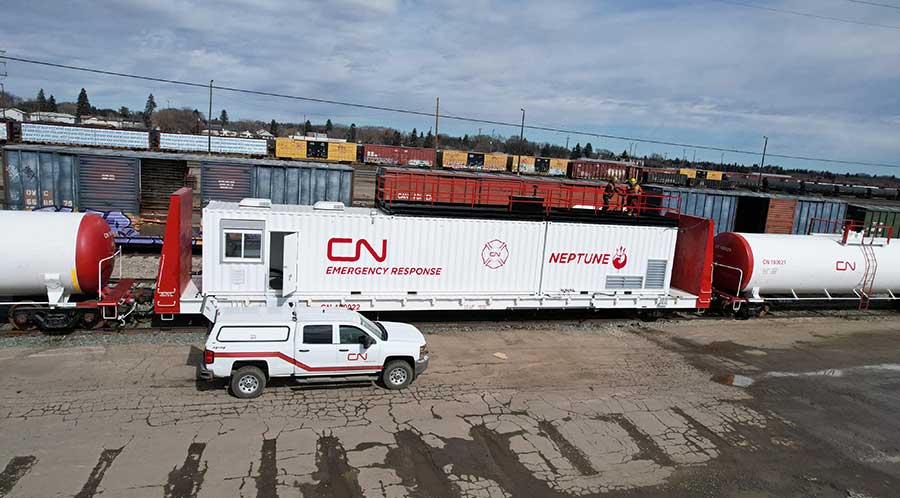PrairieFella
Sr. Member
- Reaction score
- 797
- Points
- 760
Honestly I kinda like it that way. Our relative isolation built a unique culture. Not quite Western, not quite Eastern. Multicultural but grounded. Etc etc.Just like Kansas.

Love my province.

Honestly I kinda like it that way. Our relative isolation built a unique culture. Not quite Western, not quite Eastern. Multicultural but grounded. Etc etc.Just like Kansas.

I wish I could say that....I was on new fires starting personally up until late November and I got a slow spring with no my first fire in April. But coworkers were dealing with fires in all the other winter months....at somewhere in there you need people to arrange for the seasonal season hiring and training work which is the "off season" workload.
Add in that for many agencies it's also only part of the job for many staff and the resource management work is year round as well and it's fun.
The one positive is that for many jurisdictions they are acknowledging that you can't rely upon firefighters only between May-August (aka school break) and that you need resources for those spring and fall situations. I think of it more like some of the historical militia call outs/campaigning season that used to be between seeding and harvest time in the summer months...and as warfare/tactics evolved has moved to 24 hour, year round battles. Lightning caused fires - yes - need the summer heat to generate the lightning but unfortunately we can't stop stupid people from starting fires year round which is where some resources need to be available for response.
I also agree that one of the biggest challenges is if you have a major situation you're always short of manpower/resources...but you can never justify having everyone sitting around for the 99% rare occurrence situation unless they are doing alternate meaningful work while waiting.
Unfortunately my experience further east is either a) dated or b) sparse so I can't speak to how TF3 (Toronto) is operating.
For reference there are:
CAN TF1 (Vancouver)
CAN TF2 (Calgary)
CAN TF3 (Toronto)
CAN TF4 (Manitoba)
CAN TF5 (Halifax)
CAN TF6 (Montreal)
All are focused upon Urban Search and Rescue, follow ICS training but their reporting lines, support and membership varies.
There is a general rule that the CAF cannot provide services that compete with civilian industry.That old saw has been gone over again and again and again. It is not the military’s doing, but the lobbying and success of the commercial aviation operators in convincing governments across the country to prohibit the military from conducting fire bucketing (even on DND property, to put out range fires and the like) so as to maximize their own revenue. If commercial bucketing operators in the Okanagan asked you why the military didn’t bucket, they were either junior enough in their respective organizations to legitimately not know the answer, or old enough to know better. Based on the commercial fire operators’ efforts to maximize own profit water under that bridge, the RCAF removed the Griffon’s Bambi bucket from its very early service, never to be used much past its initial certification, so guess what? The ‘experts’ were right. The Griffon currently does not operate with a Bambi bucket.
Would be interested to see your reference as to which aviation experts were similarly saying the Griffon couldn’t fly in Afghanistan. I call BS on that.
I must have been tripping balls when I saw them there, then.
Although those that want to pull away from lucrative fires to put out a range fire on DND property are…..scarce.There is a general rule that the CAF cannot provide services that compete with civilian industry.
There really is not a shortage of commercial helicopters that are bucket capable, in my experience.
Maybe based on 2 RCHA's accuracy, they realized there wasn't enough YFR.Yeah, I know. I watched both 403 and 427 bucket water on fires in their respective training areas.
I think the big giant heads saw it as too much temptation to freelance off the ranges and divested the capability.
…or at least a few of their GPOs. IYKYKMaybe based on 2 RCHA's accuracy, they realized there wasn't enough YFR.
Impact area, LZ….tomayto, tomahto…The impact area is just a suggestion, right?
Sort of like how someone could miss the backstop on an anti-tank rocket range, when the backstop is a mountain.Impact area, LZ….tomayto, tomahto…
Oh, that one.…or at least a few of their GPOs. IYKYK
Were you tripping balls in 96-99?That would have been the timeframe that 403 Sqn/LATEF was testing the 200gal Bambi Bucket. I can’t recall ever seeing it anywhere but flying in Gagetown during that operational test and eval.
Ahhhh, yeah you were definitely tripping balls!I meant Griffons over in the sandbox.

The military would be fully activated and sent to fight it.So if Toronto was burning......
They have, they just use a different name - Canadian Armed Forces. Works great too, artillery can't get triple 7s but they can get chainsaws to train on.It would be interesting to see the federal government hire 10,000 full time disaster response team members.
It's still relevant training. Have you never played "Doom"?They have, they just use a different name - Canadian Armed Forces. Works great too, artillery can't get triple 7s but they can get chainsaws to train on.


